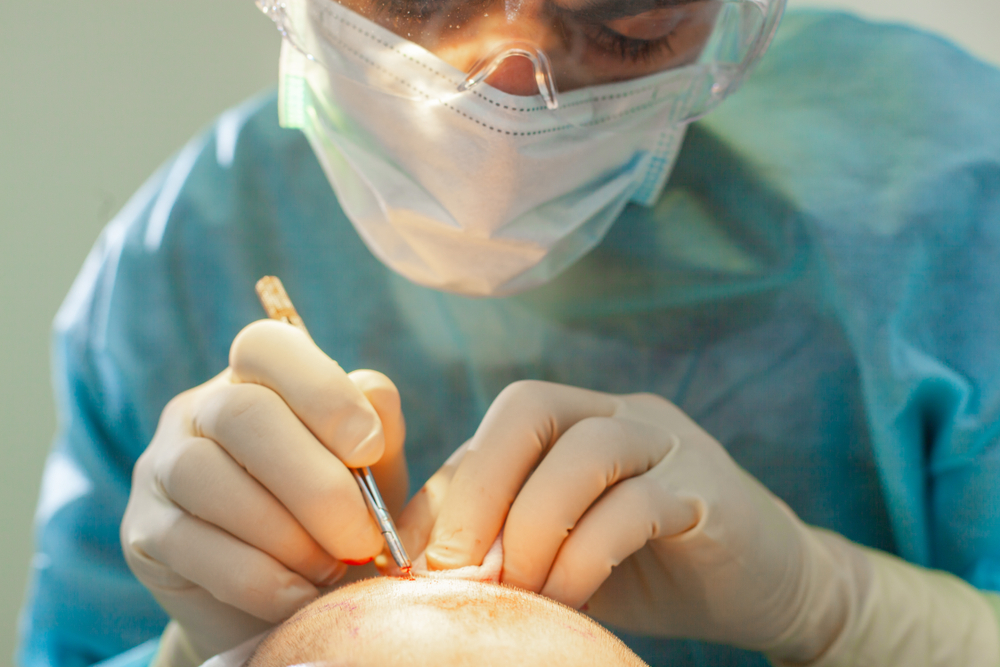Hiding a hair transplant during the initial recovery phase and beyond may be a concern for some individuals, especially if they want to keep the procedure private.
Here are some strategies to help conceal a hair transplant…
1. Hairstyling – The most straightforward way to hide a hair transplant is through clever hairstyling. By working with your existing hair and styling it strategically, you can create a look that covers the treated areas. Your surgeon or a professional hairstylist can guide the best hairstyles to achieve this.
2. Hair Products – Hair styling products such as hair gel, pomade, or hair spray can help control and arrange your hair to cover the treated areas effectively. These products can add volume and hold your hair in place, making it easier to hide any temporary redness or scabs.
3. Hair Fiber Concealers – There are hair fiber concealers available in the market that can provide a temporary solution for hiding thinning hair or any visible scarring from a transplant. These products contain tiny, color-matched fibers that adhere to your existing hair, making it appear thicker and fuller.
4. Headwear – Wearing hats, caps, or headscarves can be a practical way to conceal the treated areas during the initial recovery phase. Make sure that these items are not too tight or constricting as they can interfere with proper healing.
5. Camouflage Makeup – Some individuals use makeup products designed to conceal scars and redness to camouflage any visible signs of a hair transplant during the early stages of recovery.
6. Avoiding Sun Exposure – Protecting the treated areas from direct sunlight is crucial in the early recovery phase. Sun exposure can cause redness and may be noticeable, so wearing a hat or using sunscreen can help.
7. Patience – Remember that the visible signs of a hair transplant, such as redness, scabbing, and shock loss, are usually temporary. With time, these issues should resolve, and the transplanted hair will begin to grow and blend with your existing hair, making it less noticeable.
8. Consult with Your Surgeon – Your hair transplant surgeon can provide guidance on the best practices for concealing the procedure during recovery and can address any concerns you may have about the visibility of the transplant.
Conceal your hair transplant depending on the procedure and individual recovery. Discuss your concerns and preferences with your surgeon, and they can provide tailored advice to help you achieve the desired level of discretion during your recovery and beyond.





